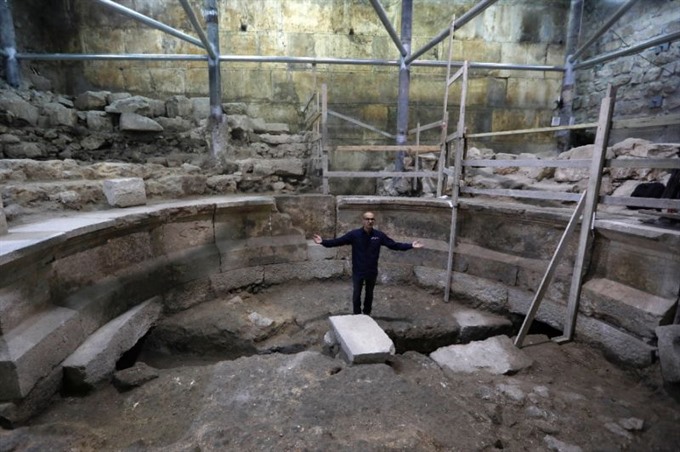 Life & Style
Life & Style

Israeli archaeologists in Jerusalem's Old City on Monday unveiled a newly unearthed section of the Western Wall and the first Roman public structure ever discovered in the city, they said.
 |
| Joe Uziel, an archeologist from the Israeli Antiquity Authority, shows journalists a recently discovered new part of the Western Wall tunnels in Jerusalem’s Old City. — AFP Photo |
JERUSALEM — Israeli archaeologists in Jerusalem’s Old City on Monday unveiled a newly unearthed section of the Western Wall and the first Roman public structure ever discovered in the city, they said.
Archaeologist Joe Uziel said he and his colleagues knew the wall section was there and had expected to find a Roman street at its base.
"But as we excavated and excavated we realised we weren’t getting to the street. Instead we have this circular building," he told reporters at the underground site.
"Basically we realised that we were excavating a theatre-like (Roman) structure."
He said that carbon-14 and other dating methods indicated it came from the second or third centuries AD and appeared to be unfinished.
The Israel Antiquities Authority (IAA), which conducted the two-year dig, said that historical sources mentioned such structures but in 150 years of modern archaeological research in the city none had been found.
The section of the 2,000-year-old Western Wall uncovered by the diggers is about 15 metres (yards) in width and eight metres high, with the stones very well preserved.
It had been buried under eight metres of earth for 1,700 years, the IAA said.
The Western Wall is among the last remnants of the retaining structures which surrounded the second Jewish temple until its destruction by the Romans in 70 AD.
It is the holiest site where Jews are permitted to pray.
Previously, the last section to be exposed was in 2007, IAA chief Jerusalem architect Yuval Baruch said.
"Exposing parts of the Western Wall is of course extremely, extremely, extremely exciting, but the structure we are looking at right now we had no idea would be here," Uziel said, pointing to the 200-seat auditorium.
"It’s probably the most important archaeological site in the country, the first public structure from the Roman period of Jerusalem," Baruch said.
"We know a lot about dwelling houses, a lot about installations, water systems, roads, streets but this is the first time we can present to the public a Roman public structure," he added.
The IAA statement said the building could have been a meeting chamber for Roman administrative officials or a concert venue, but said its location under an ancient arch which could have served as its roof gave a clue.
"This is a relatively small structure compared to known Roman theatres," it said.
"This fact, in addition to its location under a roofed space -- in this case under Wilson’s Arch -- leads us to suggest that this is a theatre-like structure of the type known in the Roman world as an odeon."
"In most cases, such structures were used for acoustic performances. Alternatively, this may have been a structure known as a bouleuterion – the building where the city council met," it said.
Wilson’s Arch, named for 19th-century explorer and surveyor Charles Wilson, dates to the second temple period and served as a passageway for people entering the temple compound, the IAA says.
Uziel said that the archaeologists worked with care, mindful of the Jewish, Muslim and Christian worshippers nearby.
"We did not want to disturb any of the religious activities that were occurring in this area," he said. — AFP